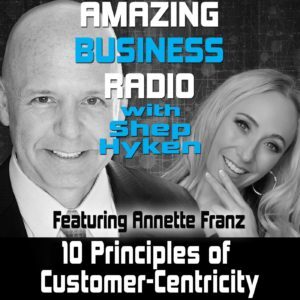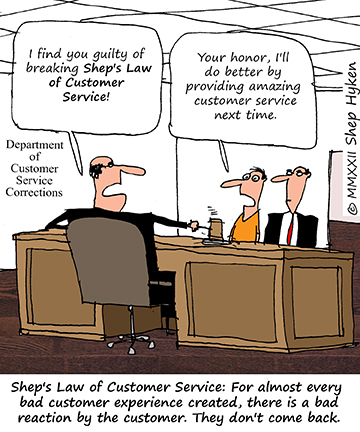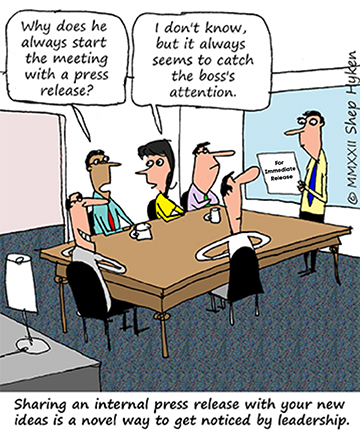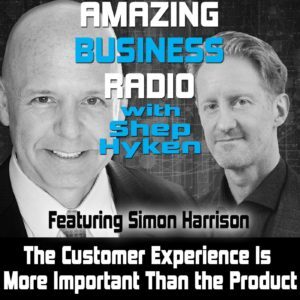Shep Hyken's Blog, page 67
March 22, 2022
Amazing Business Radio: Annette Franz
 10 Principles of Customer-Centricity
10 Principles of Customer-CentricityHow Winning Organizations are Built
Shep Hyken interviews Annette Franz, founder and CEO of CX Journey Inc. and the author of Built to Win: Designing a Customer-Centric Culture that Drives Value for Your Business. They discuss why customer-centricity needs to be understood and lived by the whole organization.






 Top Takeaways:
Top Takeaways:Annette Franz shares the 10 key defining foundational principles that ensure customer-centricity from her latest book:
Culture is the foundation. Culture is core values plus behaviors. It needs to be deliberately designed to be customer-centric. Leadership commitment and alignment are critical to success. Customer centricity cannot just be one department or one person. It needs to be organization-wide. Employee experience: employees must be put more first. When employees are happy and engaged, they will be more productive. People come before products. Put the people first and take the time to understand who they are, their needs, pain, and what they are trying to do. Understanding our customers is how we can develop products for them instead of finding customers for our products. People come before profits. Profits and shareholder value are outcomes. Great customer experiences are how we make sure that we get to those outcomes. People come before metrics. If you focus on numbers and metrics, you do things differently than when you focus on improving the experience, which will ultimately move those numbers. Customer understanding is the cornerstone. The voice of the customer is the cornerstone to every discussion, decision, and design of a customer-centric culture. Governance bridges organizational gaps. Governance has two parts to it- the structure and the operating model. The structure is all of the committees that we have to get the organization working together to benefit the customer. The operating model is the people, the tools, the data, and the processes. Outside-in thinking and doing vs. inside-out thinking and doing are core. Thinking outside-in is bringing the customer’s voice into everything we do. The Platinum Rule® rules. We’re all familiar with The Golden Rule, which is to treat others the way you want to be treated. Franz shares an important lesson from Dr. Tony Alessandra’s concept he calls The Platinum Rule, which is to treat others the way they want to be treated.Quotes:“You get the culture you design or the one you allow. Leaders need to be committed and aligned to customer-centricity.”
“If we have a great employee experience, we’re going to have a great customer experience.”
“A customer-centric culture is a collaborative culture. It’s all about bringing the organization together to make sure that the customer has a better experience.”
About:Annette Franz, CCXP, founder and CEO of CX Journey Inc., is an internationally recognized customer experience thought leader, coach, and keynote speaker. She is the author of Customer Understanding: Three Ways to Put the “Customer” in Customer Experience (and at the Heart of Your Business). Her latest book, Built to Win: Designing a Customer-Centric Culture that Drives Value for Your Business, is now available.
Shep Hyken is a customer service and experience expert, New York Times bestselling author, award-winning keynote speaker, and your host of Amazing Business Radio.
This episode of Amazing Business Radio with Shep Hyken answers the following questions … and more:
What is customer-centricity?What is The Platinum Rule® rule?What is customer service culture?How do you use the voice of the customer?What does being people first mean?The post Amazing Business Radio: Annette Franz appeared first on Shep Hyken.
March 21, 2022
5 Top Customer Service Articles of the Week 3-21-2022
Each week I read many customer service and customer experience articles from various resources. Here are my top five picks from last week. I have added my comment about each article and would like to hear what you think too.
15 Stats About Post-Covid Customer Service by Blake Morgan(Forbes) As the pandemic starts to subside and the dust starts to settle, companies can move from survival mode to preparing for the future and adjusting to changes and trends in the post-Covid world. Chief on that list is updating customer service efforts. These 15 stats show how customer service has changed because of the pandemic and answer the big question: what comes next?
My Comment: My friend and fellow customer experience expert, Blake Morgan, has assembled an interesting set of stats and facts about post-pandemic customer service and CX. Our customer service research supports the theme. 59% percent of the more than 1,000 consumers we surveyed feel that customer service is worse now than before the pandemic.
5 Tips to Increase Your Customer Satisfaction in 2022 and Beyond by Wise Marketer Staff(The Wise Marketer) Customer satisfaction is affected by all brand touchpoints, from first impressions to customer service, and impacts customer loyalty. And today, meeting the bare minimum customer service expectations will not make the cut.
My Comment: Here are five excellent ideas/tips to improve your company’s customer experience. It’s not so much that there is anything new here, but it’s a solid list: self-service options, an omni-channel experience, measuring success, turning around negative feedback, and doing more than expected. Sometimes common sense makes the most sense!
How Retailers Can Improve Their Customer Retention Rates Through UGC by Adam Dornbusch(Total Retail) To help keep brands growing and revenue increasing beyond a customer’s initial experience, here are some concrete steps brands can take to engage their customers this spring season after they’ve purchased a product.
My Comment: User Generated Content (UGC) is about letting customers share their stories and ideas about your products and services. Testimonials and customer reviews are powerful. And right up there with that power is when customers create content (written and video) for the world to see. And even though the article is focused on retail, this concept can work in almost any industry.
The Five Cs of Customer Service by Call Centre Helper Magazine(Call Centre Helper Magazine) If you are looking for contented customers, then there are five key areas that you need to address. Read on for the Five Cs of quality customer service. The best and easiest ways to gain a considerable advantage over your competitors.
My Comment: Another great list, and this time the Five C’s of customer service which includes Care, Competency, Culture, Consistency, and Communication. These five C’s, and the explanation behind them, are great topics to start a conversation for your next team meeting.
Customer Experience in the Age of AI by David C. Edelman and Mark Abraham(Harvard Business Review) In this article we explore how cutting-edge companies build what we call intelligent experience engines to assemble high-quality customer experiences using AI powered by customer data.
My Comment: This article is as much about AI as it is about personalization. The authors use Brinks, the 163-year-old armored car company as an example of how a brand can use AI to improve the customer experience. The big benefit reaches the customer in the form of a more personalized experience. Of course, there’s much more in this outstanding article.
BONUSESTop 10 Recruitment Strategies Every Customer Service Leader Must Know by Misa Chien(Autopilot Reviews) If your recruitment process doesn’t attract the right talent or takes too long to bring in new team members, your current agents will face increased pressure. This, in turn, reduces the quality of the service being delivered, not to mention the fact that it can drastically limit call handling volumes at the same time. Fortunately, the opposite is also true: a solid recruitment strategy is one of the best ways to improve the quality of the service offered by your agents while also scaling your call center in a sustainable way.
My Comment: If you run a customer support contact center, this is a must-read article on how to recruit and hire the best candidates. I was asked to share my thoughts on how to get and keep good employees in an industry that is known for high turnover. The author provides several interesting and different ideas.
State of Consumer Behavior 2022 by Raydiant(Raydiant) Though brick-and-mortar and online commerce are complementary features of many organizations, it’s vital to maintain healthy comparisons between the two. You’ve invested heavily in your stores, and you want shoppers to experience them. If consumers trend too far towards online-only shopping, it becomes difficult to recoup investments in your stores.
My Comment: This isn’t an article, but a full report on consumer behavior, and it is excellent. There are plenty of stats and facts, and the end of the article includes commentary from several experts (including my comments).
[image error]Shep Hyken is a customer service expert, professional speaker and New York Times bestselling business author. Go to The Customer Focus to learn more about our customer service training programs. Follow on Twitter: @Hyken
to learn more about our customer service training programs. Follow on Twitter: @Hyken
The post 5 Top Customer Service Articles of the Week 3-21-2022 appeared first on Shep Hyken.
March 18, 2022
Guest Post: The Bottleneck is Always At the Top of the Bottle
This week we feature an article by my friend Annette Franz, CCXP, founder and CEO of CX Journey Inc. She has spent the last 30 years in the customer experience profession and has a new book, Built to Win coming out on March 22. In this article, she shares how leaders create, sustain, and transform their team’s culture.
Have you heard the saying, “A fish rots from the head down?” It means that the problem starts at the top, with your leadership team. Guess what? Your culture rots from the head down, too. It means that the problems, failures, issues, toxicity, etc., in your organization – or any organization – start with the leadership team.
Here’s another way to look at it.Peter Drucker said, “The bottleneck is always at the top of the bottle.” When I heard that, I thought, “Darn, I wish I’d have thought of that one!” He is so right!
Senior leaders and executives: take a good, hard look at how you and your colleague’s act, behave, make decisions, walk the walk/talk the talk, live the values, etc. How would you feel if your employees did what you just did? If you say, “I’d feel great!” then kudos to you. But if you scratch your head and think that what you do is fine because you lead a team or lead the company – but wouldn’t want your employees to act the same way – you are wrong. It doesn’t work that way.
Everyone in your company must live by the same standards, by the same values. Good or bad, that’s how cultures are purposely created. That’s how cultures are sustained. That’s how cultures are transformed. That’s what they mean when they say that you get the culture you create or allow.
Not sure about the negative impact leaders have on the organization? Need some examples of the bad? Uber. Travis Kalanick’s leadership came into question quite often after videos of him arguing with a driver were released. Other examples: He said Uber wasn’t responsible if drivers attacked passengers, and he degraded women. His words and his actions drove the Uber “bro-culture.” WeWork. A sexual harassment lawsuit from a former employee describes WeWork as having an “entitled, frat-boy culture that permeates from the top down.” Wells Fargo. As CEO John Stumpf testified before the U.S. Senate Committee, he tried to escape blame for the unethical behavior of his employees. Even though he fired more than 5,000 of them for creating unauthorized and bogus accounts, it was really the culture that he created that failed. He blamed his employees. Activision Blizzard. Sexual harassment lawsuits and discrimination claims by employees and by the State of California were all over the news last year. The company’s president was well aware of the situation, as were other executives, and even enabled the behavior that included “cube crawls,” groping female employees, and more. Need some examples of the good?Think about Tony Hsieh and the culture he created within Zappos. Think about Howard Behar and Howard Schultz and the culture they created within Starbucks. Think about Bob Chapman and the culture he has created within Barry-Wehmiller. Think about Doug Conant and Campbell Soup Company.
Leaders must model the behavior they want to see – this is where the real culture transformation begins. And if they see behaviors unbecoming of the culture they desire, they must stop them – not enable them. Because, metaphorically speaking, “What’s good for the goose (leader) is good for the gander (employee).” In other words, if you, as a leader, want employees to act a certain way, then you must live the values, lead, model, and show them what the right or acceptable behavior is. And only then does culture become “how employees act when the CEO (or anyone else) isn’t looking.” Because, let’s face it, most of the time the CEO is not there, looking over an employee’s shoulders. But if employees see that executives put themselves “above the law,” forget it; that’s a major culture fail.
One last pointOne last point here about the behaviors you get – especially as we think about the behaviors required in a customer-centric culture. Remember that you get what you reward. If you reward sales and growth but talk about being customer-obsessed, the behavior you see will still only be sales-driven, not customer-driven. That applies to any type of culture that you are deliberately trying to create: if you reward one type of behavior while talking about something else, employees will go after the reward, not the talk. So make sure your rewards align with what you’re saying and the type of culture you’re creating.
Annette Franz, CCXP, founder and CEO of CX Journey Inc., has spent the last 30 years in the customer experience profession. She’s an internationally recognized customer experience thought leader, coach, consultant, and speaker, as well as the author of two books: Customer Understanding: Three Ways to Put the “Customer” in Customer Experience (and at the Heart of the Business) and Built to Win: Designing a Customer-Centric Culture That Drives Value for Your Business.
 For more articles from Shep Hyken and his guest contributors go to customerserviceblog.com.
For more articles from Shep Hyken and his guest contributors go to customerserviceblog.com.
Read Shep’s latest Forbes article: Passion Can Be A Competitive Differentiator
The post Guest Post: The Bottleneck is Always At the Top of the Bottle appeared first on Shep Hyken.
March 16, 2022
Back to Class: Shep’s Law of Customer Service
 Let’s go back to physics class for just a moment. Isaac Newton’s third law of motion states, “For every action in nature, there is an equal and opposite reaction.” I admit to struggling in physics, but this was one principle I understood. The other day, a friend quoted Newton’s third law, and it hit me. Not only does this happen in physics, but it also happens in business, specifically when there is bad customer service or a bad customer experience (CX). So, with that, I bring you Shep’s Law of Customer Service, which is:
Let’s go back to physics class for just a moment. Isaac Newton’s third law of motion states, “For every action in nature, there is an equal and opposite reaction.” I admit to struggling in physics, but this was one principle I understood. The other day, a friend quoted Newton’s third law, and it hit me. Not only does this happen in physics, but it also happens in business, specifically when there is bad customer service or a bad customer experience (CX). So, with that, I bring you Shep’s Law of Customer Service, which is:
For almost every bad customer experience created, there is an opposite reaction by the customer. They don’t come back.
Notice that I put the word almost in the definition. Let me explain.
A company wants a customer to buy its product or service. Then the customer has a bad experience. Perhaps an employee was rude or there was a problem with a shipment and the company didn’t handle it properly. Let’s call that the company’s “action.” The “equal and opposite reaction” comes from the customer choosing not to come back, which is the opposite of what the company wants the customer to do.
Where customer service and CX differ from Newton’s third law is that it’s not always an exact equal or opposite reaction. It doesn’t happen every time, but almost every time. What if almost all your customers, as in almost nine out of 10 of them, were to leave after experiencing bad customer service? That’s exactly what we found in our latest customer service research, that 86% of customers are willing to switch brands or companies because of a bad customer service experience.
And the company doesn’t even have to deliver truly bad service – just not “good enough service.” Eighty-three percent of customers are willing to switch because another company will give them better service.
Now let’s remember that perfection is not reality, so it’s not quite as grim as it may seem. I have emphasized the word almost, and for very good reason. Our research also found that most customers give one or two chances before leaving deciding to leave. While not quite an equal and opposite reaction, it’s close enough to make the point.
And mistakes don’t count if they are managed well. A mistake or complaint handled well actually reinforces that the customer made the right choice to do business with that company – sometimes even more than if the mistake had never happened at all.
Let’s summarize it this way. When a customer chooses to do business with you, there are two future outcomes. They come back, or the opposite happens, and they don’t. So, manage for the reaction – not the opposite reaction – that you want to happen, which is to get the customer to say, “I’ll be back.”
Shep Hyken is a customer service expert, keynote speaker, and New York Times, bestselling business author. For information on The Customer Focus customer service training programs, go to www.thecustomerfocus.com. Follow on Twitter: @Hyken
customer service training programs, go to www.thecustomerfocus.com. Follow on Twitter: @Hyken
(Copyright © MMXXII, Shep Hyken)
The post Back to Class: Shep’s Law of Customer Service appeared first on Shep Hyken.
March 15, 2022
Amazing Business Radio: Joel Bines
 The Metail Economy
The Metail EconomySix Ingredients for Transforming Your Business to Thrive
Shep Hyken interviews Joel Bines, managing director and global co-head of the Retail Practice at AlixPartners and the author of The Metail Economy. They discuss how to meet the growing expectations of the smart and savvy Me-centric customer.






 Top Takeaways:
Top Takeaways:Joel Bines shares the six ingredients for transforming your business to thrive in this Metail economy: curation, customization, category expertise, cost, convenience, community.
Curation: The art of defining and producing a set of experiences (products, locations, digital, physical, etc.) so that the person thinks that someone picked all of these things just for them.Customization: Consumers want to have a say in the products they want to spend their money on. Because of technology, it’s never been easier to customize some experience component. That doesn’t mean it has to be bespoke. You can provide the illusion of customization by finding things that give the consumer the sense that they are customizing something. Add one or two more, and you’re fine. You don’t have to build one thing at a time.Category expertise: Expertise means that any question that customers might have is easily answered by the person they are talking to.Cost: If you are going to use cost as a competitive advantage, then it has to be the lowest cost at all times because consumers are smart and savvy with technology. It’s easy to find a lower cost if there is one.Convenience: The question you need to ask when thinking that convenience is an advantage is, “Who is it convenient to?” Too often, company executives start with convenience for the company. If the answer is not “convenient for the customer,” then you’re doing convenience wrong.Community: If you’re going to build a community of people, you have to make sure that every part of your organization is set up to serve that community. It is very difficult to build a community, but losing a community is very easy.Quotes:“Customers’ tolerance and friction level for customer experience are lower than ever. Customers know what they want, and if the companies they do business with cannot give it to them, they go somewhere else.”
“If you maintain convenient access to the things that people want, you will win the loyalty of the customers who are attracted to that type of convenience.”
“Every incremental interaction with a customer should be with the goal of making your customers happy.”
“You can choose which customers you want to make happy and don’t want to make happy. But, you have to understand that in choosing, you’re going to create a group of people who will no longer want to be your customers. Be intentional.”
About:Joel Bines is a managing director and global co-head of the Retail Practice at the business consulting firm AlixPartners. He is widely regarded as one of the world’s leading operational strategists with a 30-year track record of improving performance at retailers, brands, and consumer companies.
Shep Hyken is a customer service and experience expert, New York Times bestselling author, award-winning keynote speaker, and your host of Amazing Business Radio.
This episode of Amazing Business Radio with Shep Hyken answers the following questions … and more:
What is the Metail economyWhat is a new Me-centric consumer?How do you create a customer-centric approach?How can businesses thrive in the Metail economy?What are the six ingredients for transforming your business?The post Amazing Business Radio: Joel Bines appeared first on Shep Hyken.
March 14, 2022
5 Top Customer Service Articles of the Week 3-14-2022
Each week I read many customer service and customer experience articles from various resources. Here are my top five picks from last week. I have added my comment about each article and would like to hear what you think too.
Using Customer Journey Maps and Jobs to Be Done for a Better Customer Experience by Tobias Komischke(CMSWire) Customer experience design’s goal is providing consumers with the offerings they need to accomplish their objectives frictionlessly across all phases of the customer lifecycle.
My Comment: We kick off this week’s Top Five roundup with a robust article that takes us back to the basics, journey mapping the customer experience. If you haven’t done this exercise before, it’s time. The journey map, according to the author, is, “… A step-by-step visualization of the activities that a customer goes through to accomplish something.” In other words, it’s all of the interaction points the customer experiences. I also like the author’s JTBD (Jobs to Be Done) concept, and it’s not what you think. And there’s much more.
The New Reality of Loyalty: Consumers Want Brands To Earn It by PRNewsWire(MarTech Cube) Amid ever-rising consumer expectations, supply chain disruptions, and less access to third-party data, Yotpo’s annual State of Brand Loyalty survey reveals just how hard brands have to work to earn loyalty that drives positive business outcomes.
My Comment: I geek out over stats and facts, and this article has plenty of them. You’ll love how consumers define loyalty, which is when they “tend to buy from the same brand.” And, I love that 42% of consumers would buy from a brand they were loyal to despite cheaper competitors. And, of course, there is much more.
These AI Mistakes Are Slowly Killing Your Customer Experience by Young Entrepreneur Council(Forbes) From self-driving cars to fraud prevention, artificial intelligence (AI) has long transcended the “buzzword” label. And two years into Covid-19, AI assumes an expanded role in the customer service landscape.
My Comment: Here is an excellent article that covers how certain AI (Artificial Intelligence) “mistakes” can negatively impact your customer service and CX. In addition to mentioning my stance on over-automation and under-personalization, there are four more ideas/mistakes that will help ensure your customers receive the best experience possible.
These 5 Practices Can Lower Your Call Center Attrition Rate by Chrissy Kapralos(Fonolo) Call center turnover rates are some of the highest in the entire workforce. But that doesn’t mean call center leaders are powerless. How do you retain high-performing call center employees?
My Comment: If you have a call center, this article is for you. Our friends at Fonolo have shared a short but powerful article on how to reduce employee attrition. According to the article, the average attrition rate is 30-45%. If you’re experiencing unacceptable employee churn, then pay attention and spend four minutes reading this.
The Best Way To Focus on Customer Experience Is To Follow Mom’s Advice by Dan Gingiss(Dan Gingiss) Customer experience doesn’t have to be a multi-year, multi-million-dollar transformational project. In fact, it’s more often a series of little things. It’s a long series, to be sure, and in theory it never ends because as soon as think we’ve landed on the optimal CX, customers change their expectations.
My Comment: My buddy and fellow customer experience expert, Dan Gingiss, came out with a short and entertaining read this week. He’s sharing his Mom’s advice, which I won’t tell you here. You’ll have to read the article to find out. I’ll just say that it’s a lesson that is applicable to any leader of any type of organization. And it’s so simple – even easy!
[image error]Shep Hyken is a customer service expert, professional speaker and New York Times bestselling business author. Go to The Customer Focus to learn more about our customer service training programs. Follow on Twitter: @Hyken
to learn more about our customer service training programs. Follow on Twitter: @Hyken
The post 5 Top Customer Service Articles of the Week 3-14-2022 appeared first on Shep Hyken.
March 11, 2022
Guest Post: Short-Staffed? Start Treating Employees Like Customers
This week we feature an article by my friend Donna Cutting, Founder and CEO of Red-Carpet Learning Systems, Inc., and the author of the new book Employees First! Inspire, Engage, and Focus on the HEART of Your Organization. She shares the five ways to treat employees like customers and become a company where people want to work.
People quit their jobs in record numbers last year, and many of them never jumped back into the world of work. While some experts expect “The Great Resignation” will slow down in 2022, there’s no doubt that companies will still be competing for talent in the coming months. The power has shifted from employer to employee. How do you become the type of company where people want to work? The simple answer is to start treating employees like you treat your customers. Here are five ways to do just that.
Give Employees a VoiceIf customers were in short supply, one of the first strategies you might employ is to listen. You’d reach out to your current and past customers, discover their pain points and get a sense of what was important to them at the moment. You might even ask them to collaborate with you on new products and services to help you better serve their changing needs. It’s time to listen more deeply to your internal customers. Their needs and wants have shifted, and you’ll do a better job of attracting and retaining the best people for your company if you ask good questions, listen without getting defensive, and work with them to co-create a more meaningful employee experience.
Make It Easy to Work with YouCustomers want convenience and so do your employees. You can’t expect the people you employ to live up to your standards of excellence if you aren’t providing them with the resources and skills to do so. Give them what they need to do their job and do it well. It’s also essential to realign expectations, so workloads are more manageable. Many people leave their jobs because they feel stressed, overwhelmed, and overworked. The time for “do more with less” is long past and has never been effective. Get honest about what you can expect from people and give them the tools they need to deliver.
Offer HospitalityGet to know your employees like you know your customers. Roll out the red carpet with broad smiles, eye contact, and friendly greetings as you pass each other in the hall. Learn and call them by name. Ask about their day. Make it a point to know what their contribution is and thank them. Check-in on remote employees and spend some time making a human connection before diving right into tasks and to-do lists. It’s customer service 101, and it applies to your team members too.
Anticipate their needsUnderstand that the times are changing, and the needs and expectations of employees are changing too. If you pay attention to the trends, you will realize that it’s time to reinvent the employee experience. If you’re determined to hang on to the old ways of doing things, you’ll be left behind when it comes to attracting and retaining the best talent. Be open to offering remote or hybrid work situations or flexible scheduling for tethered positions. Start thinking about how you will make your workplace more family-friendly with better maternity/paternity leave options, childcare, or job sharing. Review your workplace practices concerning diversity and equity strive to be more inclusive. Be more transparent and communicate rapidly and consistently with each person on the team. Don’t go the way of the leaders at Kodak who refused to move forward with the digital camera and suffered the consequences. Anticipate what’s coming and move forward to modernize your employee experience.
Personalize the experienceYour employees are unique individuals, just like your traditional customers. They each have different needs and preferences, and it’s just as important to personalize their experience. In terms of benefits, for example, your Gen Z or Millennial team members may not care so much about your fabulous 401K. On the other hand, your close-to-retirement age people may not be concerned with free tuition or paid family leave. If you want to be attractive to many prospective and current employees, ensure that you target more than one group with your benefits. Beyond benefits, a personalized employee experience also means that you’re getting to know your people and helping them achieve their individual goals through a clear-cut career path, formalized and informal coaching, and opportunities to grow and develop.
Apply what you know about delivering excellent customer service to those internal customers, and you’ll create a place where the best candidates WANT to work!
Donna Cutting is the Founder and CEO of Red-Carpet Learning Systems, Inc. and the author of Employees First! Inspire, Engage, and Focus on the HEART of Your Organization.
 For more articles from Shep Hyken and his guest contributors go to customerserviceblog.com.
For more articles from Shep Hyken and his guest contributors go to customerserviceblog.com.
Read Shep’s latest Forbes article: The Three Marketing Principles That Made Over 3,000 Brands Soar
The post Guest Post: Short-Staffed? Start Treating Employees Like Customers appeared first on Shep Hyken.
March 9, 2022
A Fictional Press Release Can Be a Great Motivator
 I’ve been asked many times how to get the C-suite to invest in customer service. There are plenty of good answers. My go-to response has always been, “Show them the numbers.” The C-suite loves numbers. Prove that spending $100 will make the company $200, and you just may capture the attention of a decision-maker in the C-suite.
I’ve been asked many times how to get the C-suite to invest in customer service. There are plenty of good answers. My go-to response has always been, “Show them the numbers.” The C-suite loves numbers. Prove that spending $100 will make the company $200, and you just may capture the attention of a decision-maker in the C-suite.
Now there is a new way to approach leadership with an idea, which is to write a Fictional Press Release.
The Fictional Press Release is probably not what you think it is. It’s not a fake release with fake news. The word fictional does not refer to the contents of the press release, but instead, to the idea that the press release will never be posted or published. It’s only to be seen by the people inside a company.
For example, you may have a new idea that’s important and beneficial for the company and/or its customers – and even its employees. One way to write it up to be considered by decision-makers is to create a press release. The traditional reason for a press release is attention. You want something to get noticed in a way that motivates the reader to take some form of action. Often, a typical press release is trying to promote or sell something, be it something of interest, such as late-breaking news or an actual product. In this case, it’s about introducing and promoting an idea. Why is it good? Why should it be implemented? And why should anyone spend money on it?
The Fictional Press Release is meant to create focus on the outcome of an idea. For example, maybe there is a piece of software you want to buy for your department. One way to get the financial decision-maker to say yes to investing in the software is to create a press release. Consider this title:
New Software Makes Customer Service Department More Productive While Saving Money
If I were the CFO and in charge of signing off on major expenses in a company, that headline might catch my eye. Follow that up with some attention-grabbing numbers. Maybe some stats and facts followed by a predicted ROI (return on investment). Those numbers need to make the case for an investment. If the company could save a million dollars by investing just $50,000 into new software, most executives would wonder, “Why didn’t we do this sooner?”
The Fictional Press Release can be used for other ideas as well. If you want to sell anyone in your company on any type of idea, consider not just writing it up, but writing it as a press release. This is a powerful way to create a summary of the idea, how much it will cost, the process, and most importantly, the benefit.
Shep Hyken is a customer service expert, keynote speaker, and New York Times, bestselling business author. For information on The Customer Focus customer service training programs, go to www.thecustomerfocus.com. Follow on Twitter: @Hyken
customer service training programs, go to www.thecustomerfocus.com. Follow on Twitter: @Hyken
(Copyright © MMXXI, Shep Hyken)
The post A Fictional Press Release Can Be a Great Motivator appeared first on Shep Hyken.
March 8, 2022
Amazing Business Radio: Simon Harrison
 The Customer Experience Is More Important Than the Product
The Customer Experience Is More Important Than the ProductCX Is More Important Than Ever!
Shep Hyken interviews Simon Harrison, Senior Vice President and Chief Marketing Officer of Avaya. They discuss the importance of creating a personalized and effortless customer experience.






 Top Takeaways:Your customers aren’t just comparing you to your direct competitors anymore. They are comparing you to the best. For example, customers may ask, Why can’t your app be as good as the Peloton app? Why can’t your speed be as quick as Amazon’s?If there is a choice between customer experience and the product, CX will usually win. You can have the best product, but if you don’t create an experience around it that works for the customer, they will find another provider.Our experience ambitions have changed in all aspects of how we live our life, how we keep fit, how we eat, how we shop, or how we travel. Companies need to aim for composability, propose solutions to create the right kind of experiences, and make sure that people feel good about what they do.To realize the benefits of personalization, suggesting what people want and how they want it should be part of how we engage our customers, staff, colleagues, and everyone in our ecosystem.We must personalize our digital experiences until it rivals the person-to-person experience. Customers need to feel like you are talking to them, even in digital transactions.Quotes:
Top Takeaways:Your customers aren’t just comparing you to your direct competitors anymore. They are comparing you to the best. For example, customers may ask, Why can’t your app be as good as the Peloton app? Why can’t your speed be as quick as Amazon’s?If there is a choice between customer experience and the product, CX will usually win. You can have the best product, but if you don’t create an experience around it that works for the customer, they will find another provider.Our experience ambitions have changed in all aspects of how we live our life, how we keep fit, how we eat, how we shop, or how we travel. Companies need to aim for composability, propose solutions to create the right kind of experiences, and make sure that people feel good about what they do.To realize the benefits of personalization, suggesting what people want and how they want it should be part of how we engage our customers, staff, colleagues, and everyone in our ecosystem.We must personalize our digital experiences until it rivals the person-to-person experience. Customers need to feel like you are talking to them, even in digital transactions.Quotes:“In this challenging experience economy, we need employees who are connected and empowered. Creating great experiences is enabled by employee experiences. They need to have great experiences themselves.”
“Customer experience is more than just the technology. The goal is to make the experience as effortless as possible and to make people feel good about what it is they’re doing.”
“When employees feel good about what it is they do, it’s going to translate to memorable, great experiences for the customers.”
About:Simon Harrison is the Senior Vice President and Chief Marketing Officer of Avaya, leading the global marketing function to engage with new and existing customers and partners, driving adoption of the company’s software solutions, and supporting Avaya as one of the leading players in a dynamic digital communications market.
Shep Hyken is a customer service and experience expert, New York Times bestselling author, award-winning keynote speaker, and your host of Amazing Business Radio.
This episode of Amazing Business Radio with Shep Hyken answers the following questions … and more:
What is Experience Thinking?What does composability mean in customer service?Is customer experience more important than the product?What is personalized customer service?How do you provide a personalized customer experience?The post Amazing Business Radio: Simon Harrison appeared first on Shep Hyken.
March 7, 2022
5 Top Customer Service Articles of the Week 3-7-2022
Each week I read many customer service and customer experience articles from various resources. Here are my top five picks from last week. I have added my comment about each article and would like to hear what you think too.
How to Build Customer Loyalty by Sharing the Inflation Burden by Joel Comm(Inc. Magazine) Too often, the rise in costs caused by inflation is passed down to the consumer. But there are some companies that are finding ways to keep their doors open while also keeping those inflation costs from impacting their customers. Here are a few ways you can take a page from their playbook to build more customer loyalty.
My Comment: Because of inflation, supply-chain issues, and employment shortages, companies are forced to find places to cut. I’ve preached for years that if you cut, don’t do it in areas where the customer will notice a drop in quality, especially as it pertains to customer service. My friend, Joel Comm, shared three interesting ways to cut costs that make sense because none impact the service customers are used to experiencing. Depending on your business, you may find the perfect place to cut without any CX consequences.
Handing Belligerent Customers – With Better Customer Service by Bob Phibbs(Chain Store Age) The constant fear we’ve endured over the past two years has decreased our capacity for empathy. Instead of going from zero to 10 on a gradual scale and escalating to out-of-control when something is more warranted, we now go directly from zero to 10; we’re either on or off. This is a vicious circle only you can break. We must teach empathy with employees, or they will be unconsciously tripping that on/off switch in customers.
My Comment: I’ve written many articles on how to deal with angry customers. They are always popular. So, when I read this article about handling belligerent customers from retail expert Bob Phibbs, I had to include it in this roundup. Bob shares his story about losing his temper with an airline employee who eventually fixed a problem in under a minute. Had she been willing to take that extra step, in the beginning, there would not have been an altercation. As much as you may enjoy Bob’s story, you’ll enjoy the lessons even more.
Do You Really Know Who Your Customers Are? by Monica Mullen(CMSWire) With two thirds of customers feeling that they’re generally treated like numbers, how do you tailor an experience to an individual? To stand apart, companies need to move beyond ho-hum experiences. They need to disrupt the status quo and connect with their customers in a differentiated way.
My Comment: The article starts with a great story. It happened to me, which is maybe why I can relate to it – and I bet it happened to you, too. I bought someone a gift off of a website. I would never have bought this for myself. Within minutes I was receiving promotions and advertising about the item. The point is the retailer made a mistake. While the data recognized that I bought something, it didn’t realize it wasn’t for me and that I would have no interest in ever buying it for myself. Mistakes like this happen all the time. So, as the title implies, do you really know who your customers are?
How Customer Service Can Help You Improve Your Content Marketing by Ciara Byrne(NewsBreak) The truth is, providing great customer service can set you apart from the competition, generate more marketing and sales opportunities, and keep your business growing successfully. In this blog, we will describe the link between customer service and content marketing – and explore the ways they complement each other.
My Comment: I believe that content marketing is a good customer service strategy. Our customers love good content that is relevant to them. It endears them to us. This article is different in that it takes the opposite approach. Good customer service can help your content strategy. The author includes seven ideas that range from the importance of self-service solutions to creating content for your website that customers relate to and more.
My Kingdom for Gatorade: Cross-Selling Exactly What Customers Want by Annie Sloan and Mikel Hubbard(Total Retail) How do you make e-commerce cross-selling exactly what the customer wants? Here are a few tips and tricks to maximize revenue while delighting your customer.
My Comment: One of the more popular topics I cover in my keynote speeches is that not upselling or cross-selling – for the right reasons – is a bad customer experience. If the customer really needs or would enjoy the item, you must tell them about it. I love that the author changed the phrase cross-selling to smart-selling. And the last paragraph includes this line: “The goal of cross-selling is to get to a place where customers actually thank you for it.” Brilliant thinking!
[image error]Shep Hyken is a customer service expert, professional speaker and New York Times bestselling business author. Go to The Customer Focus to learn more about our customer service training programs. Follow on Twitter: @Hyken
to learn more about our customer service training programs. Follow on Twitter: @Hyken
The post 5 Top Customer Service Articles of the Week 3-7-2022 appeared first on Shep Hyken.



